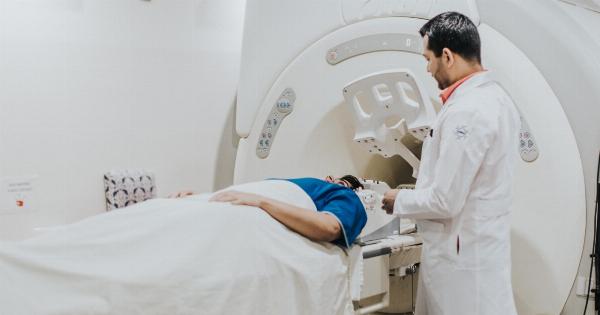In today’s modern world, we are surrounded by a vast network of technology that keeps us connected to the internet and allows us to communicate with people from all corners of the globe.
From computers to smartphones, and everything in between, our lives are entwined with electronic devices. However, some individuals claim to have developed an allergy to one of the most common and widely used technologies – Wi-Fi.
But is this so-called Wi-Fi allergy a real condition or just a figment of the imagination? In this article, we will delve into the truth about Wi-Fi allergy and separate fact from fiction.
What is Wi-Fi Allergy?
Wi-Fi allergy, also known as Electromagnetic Hypersensitivity (EHS), is a term used to describe a range of symptoms that some people attribute to exposure to electromagnetic fields (EMFs) from wireless devices, including Wi-Fi routers.
These symptoms can include headaches, dizziness, fatigue, skin rashes, and difficulty concentrating.
Is Wi-Fi Allergy a Legitimate Medical Condition?
Despite the numerous anecdotal claims made by individuals who believe they have Wi-Fi allergy, it is important to note that there is no scientific evidence to support the existence of this condition.
Multiple studies have been conducted to investigate the alleged symptoms of EHS, and in all cases, no direct link between Wi-Fi exposure and the reported health issues has been found.
The World Health Organization (WHO) has stated that there is no scientific evidence to establish a causal link between EMF exposure and symptoms attributed to EHS.
They classify EHS as a “non-specific” condition, meaning that the reported symptoms are not consistently reproducible in a controlled scientific environment.
The Power of the Placebo Effect
One possible explanation for the reported symptoms of Wi-Fi allergy could be the placebo effect.
The placebo effect is a psychological phenomenon where a person experiences a perceived improvement in their symptoms or condition due to their belief in a treatment, despite the treatment having no therapeutic value.
When individuals strongly believe that they are sensitive to Wi-Fi, they may experience symptoms when they believe they are in the presence of an active Wi-Fi signal, regardless of whether or not the signal is actually present.
This psychological aspect can contribute to the belief in Wi-Fi allergy, despite there being no scientific evidence to support its existence.
Similar Symptoms, Different Causes
It is important to note that many of the symptoms attributed to Wi-Fi allergy are common and can be caused by a variety of factors unrelated to Wi-Fi exposure.
Headaches, dizziness, fatigue, and difficulty concentrating can all be the result of stress, insufficient sleep, poor diet, and other environmental factors.
Furthermore, the prevalence of Wi-Fi in our everyday lives means that individuals claiming to have Wi-Fi allergy are likely to be exposed to other sources of EMFs, such as cell phones, laptops, and even electrical appliances, making it difficult to isolate Wi-Fi as the sole cause of their symptoms.
Scientifically Proven Health Effects of EMFs
While there is no scientific evidence supporting the existence of Wi-Fi allergy, it is important to acknowledge that exposure to high levels of EMFs can have proven health effects.
For example, excessive exposure to ionizing radiation, such as X-rays and gamma rays, is known to increase the risk of cancer and other adverse health outcomes.
However, it is crucial to distinguish between ionizing and non-ionizing radiation. Wi-Fi operates on non-ionizing radiation, which does not have enough energy to remove tightly bound electrons or ionize atoms and molecules.
Consequently, the likelihood of non-ionizing radiation causing any significant harm is extremely low, especially at the levels emitted by Wi-Fi routers and other wireless devices.
Addressing Concerns and Mitigating Exposure
For individuals who believe they are sensitive to Wi-Fi or are concerned about their exposure to EMFs, there are several steps they can take to address their concerns and mitigate exposure.
1. Determine and eliminate other sources of EMFs: As previously mentioned, Wi-Fi is not the only source of EMFs in our environment.
Identifying and reducing exposure to other sources, such as cell phones and electrical appliances, can help alleviate any symptoms that may be mistakenly attributed to Wi-Fi allergy.
2.
Relocate or shield Wi-Fi routers: If individuals are still concerned about their exposure to Wi-Fi, they can consider relocating their routers to areas less frequented by occupants or using EMF-blocking materials to shield the Wi-Fi signals.
3. Practice good sleep hygiene: Fatigue and difficulties concentrating can often be attributed to poor sleep quality.
Adhering to good sleep hygiene practices, such as creating a comfortable sleep environment and establishing a regular sleep routine, can help improve overall well-being.
4. Seek support from healthcare professionals: If symptoms persist or cause significant distress, it is advisable to consult with a trusted healthcare professional.
They can investigate potential underlying causes and provide appropriate medical advice and treatment.
The Disputed Allergy
Wi-Fi allergy, or Electromagnetic Hypersensitivity, is a disputed condition with no scientific evidence to establish its existence.
While individuals may report experiencing symptoms when exposed to Wi-Fi signals, multiple studies have not been able to replicate these claims. The placebo effect, as well as non-Wi-Fi-related factors, can explain the reported symptoms.
Understanding the distinction between ionizing and non-ionizing radiation is crucial, as Wi-Fi falls within the latter category and poses minimal risk to human health. Addressing concerns, reducing exposure to EMFs, and seeking guidance from healthcare professionals can provide comfort and support.






























